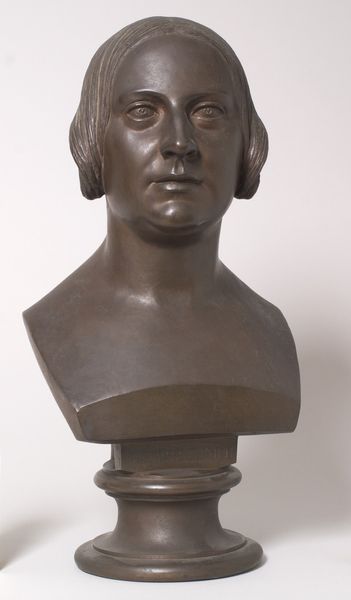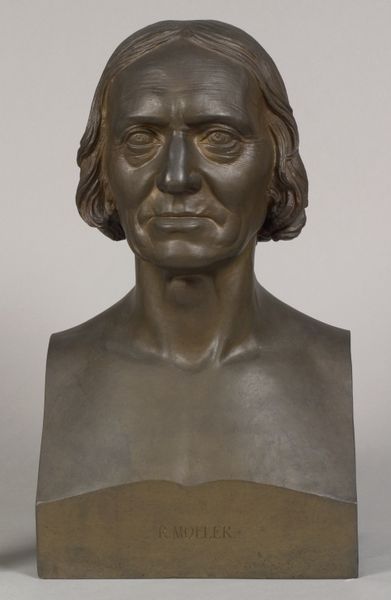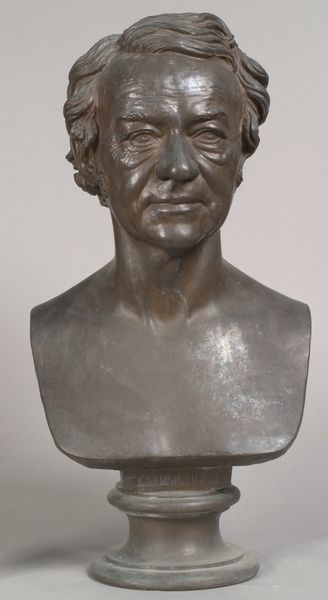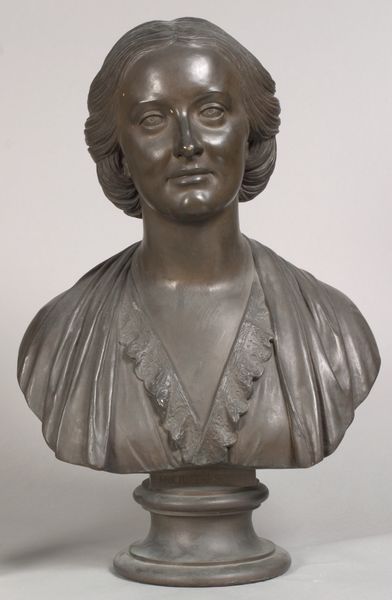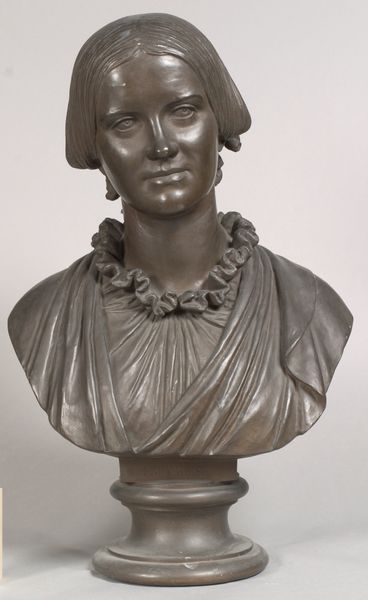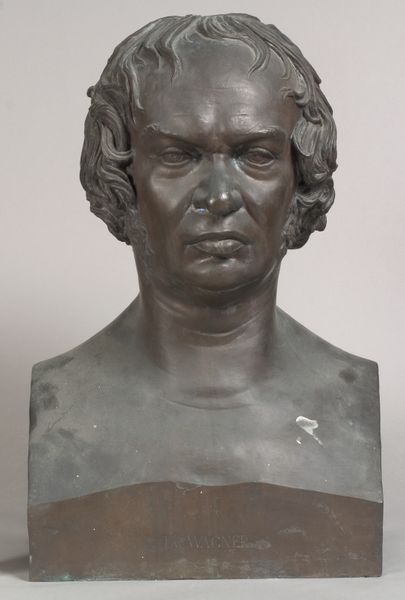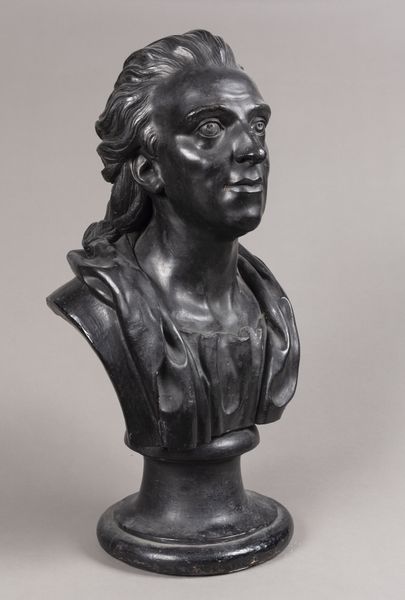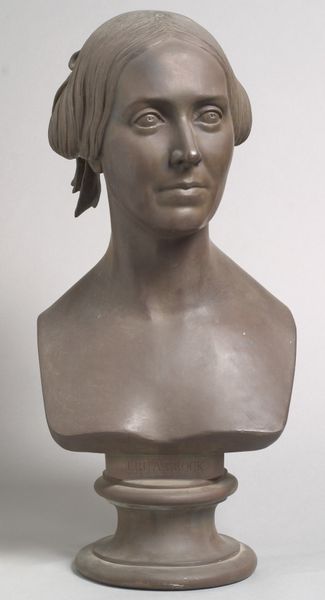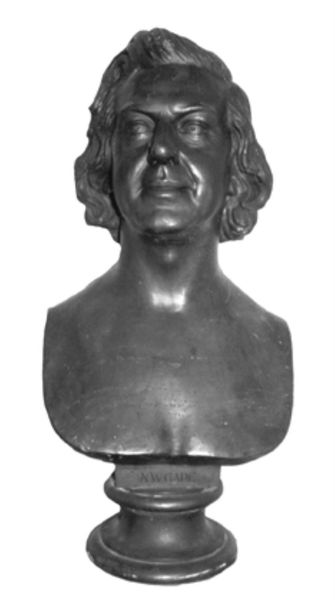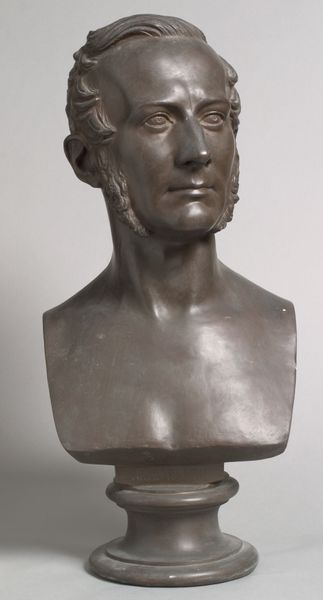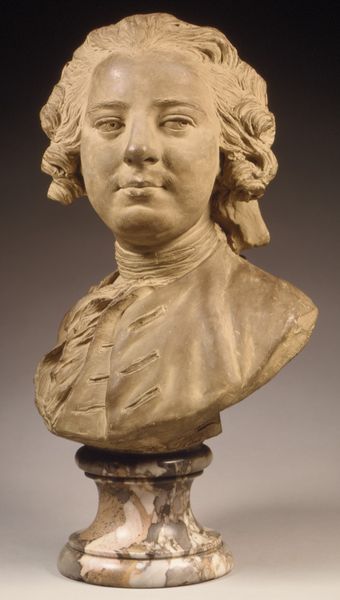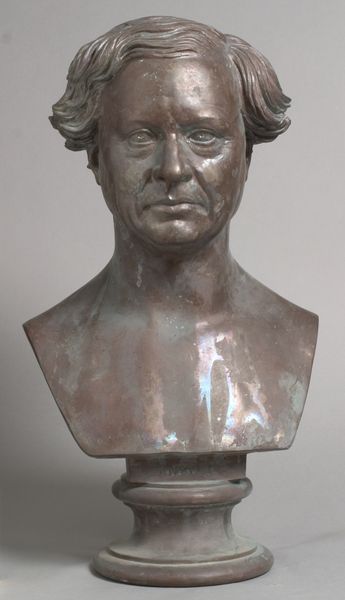
Dimensions: 61.3 cm (height) (Netto)
Editor: This is a bronze sculpture from 1862 by H.W. Bissen, titled *Den norske digter Andreas Munch*, which translates to The Norwegian Poet Andreas Munch. The expression on the face is quite striking. How do you read the sculptural qualities of this work, particularly focusing on the bronze material? Curator: Indeed. First, let us consider the very material. The bronze lends a weight and permanence that directly speaks to the sitter's importance. The classical form suggests an elevation of the sitter to a more... universal sphere. Note the almost idealised, smooth planes of the face, and the subtle detailing around the eyes. What contrasts do you observe in texture? Editor: Well, the face seems very smooth and polished compared to the hair, where you can almost see individual strands and a more textured feel. And is it neoclassical because of that smooth idealized form? Curator: Precisely. Observe the tension between realism in the details and idealization in the overall form. The sculptor aims to present not merely a likeness, but a distillation of the sitter's essence. The turn of the head, the slight asymmetry around the mouth... How do those formal elements contribute to your interpretation? Editor: It makes the figure look contemplative, or perhaps a bit sad, even if the face doesn't have a very expressive shape. It is like a subtle mood, coming mostly from composition, texture, and maybe even lighting playing on the metallic surface? Curator: A valuable point. This demonstrates how a seemingly static form can communicate nuanced emotions through a formal language. This dialogue of texture and smoothness gives the piece both vibrancy and stability. Editor: It’s interesting how the artist could convey so much with just a few formal decisions. I didn't notice so many little changes of surface! Curator: Exactly. Close attention to these formal components unlocks a deeper understanding of the work's meaning and the sculptor’s intent.
Comments
No comments
Be the first to comment and join the conversation on the ultimate creative platform.
